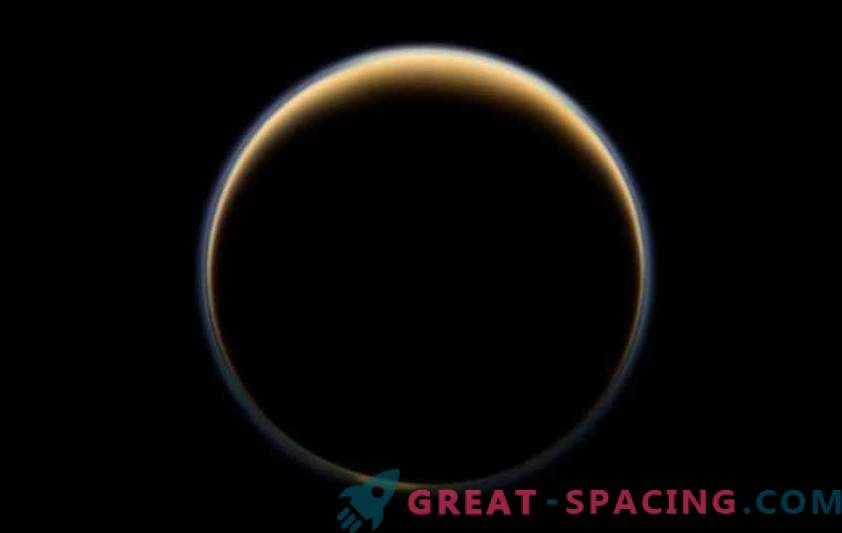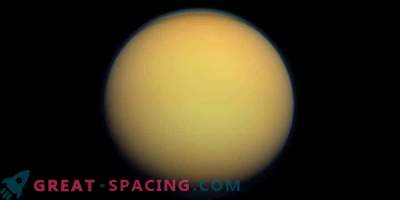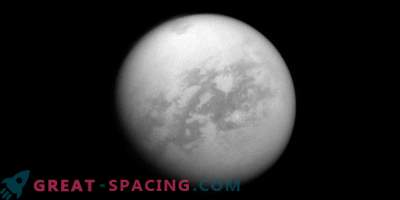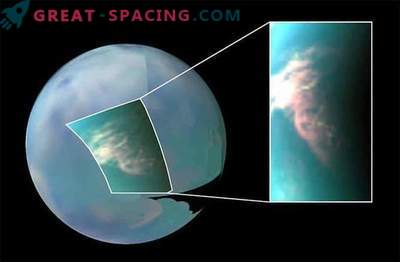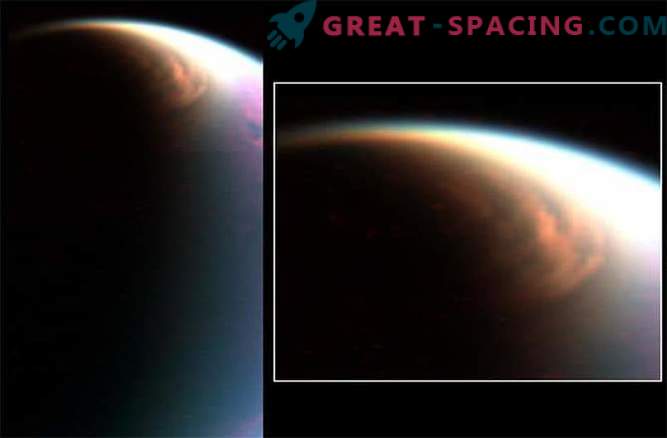
It is not surprising for science that the satellite of Saturn Titan is covered with a dense atmosphere where complex hydrocarbons can be reproduced and propagated. As you know, at minus 300 degrees Fahrenheit (-185 degrees Celsius), liquid methane and ethane take the place of water on the dark surface of Titan and in its sky.
But now, thanks to data collected by Cassini’s spacecraft, during his ten-year journey into Saturn’s orbit, the researchers confirmed the presence of methane ice inside high-altitude dense clouds over the North Pole of Titan, confirming some theoretical models of the satellite’s atmosphere.
Due to the fact that Cassini was able to observe Titan during the 29, 7-year cycle of Saturn, scientists were able to track changes in weather conditions in the satellite atmosphere using scientific instruments of the spacecraft. One of the most obvious changes is the development of the polar vortex over the north pole of Titan, which is located in its stratosphere above the lower level of satellite clouds.
While ethane ice was previously detected in high-altitude clouds, researchers from the Goddard Space Flight Center at NASA found that larger particles of methane ice are also present in the stratosphere. This shows not only that the temperature of the Titan's stratosphere at high latitudes is low enough for methane to condense and freeze, but also that there is a circulation that transfers methane from warmer latitudes to the poles. “Cassini is steadily gathering evidence of this global pattern of circulation. The discovery of this new methane cloud is further evidence that the atmosphere’s working process coincides with our view,” said Michael Flazar, a scientist and lead researcher at Cassini’s Composite Infrared Spectrometer (CIRS).
Clouds of methane can also be sources of liquid methane, found in numerous lakes scattered around the north pole of Titan.

The atmosphere of Titan in a false color
Similar types of clouds were also found in the Earth’s atmosphere over the polar latitudes during the winter months. But their chemical composition is completely different from what we see on Titan, since the atmosphere of this Saturn satellite is much thicker than that of the Earth and the processes take place at a higher altitude: from 98,000 to 164,000 feet (30 to 50 km). "Titan continues to amaze us with natural processes similar to those of the earth, but with materials other than our usual water," said Scott Edgington, a scientist from the Cassini project at NASA's Jet Propulsion Laboratory.
